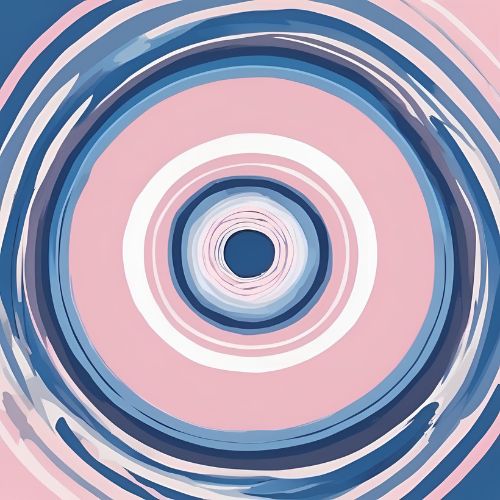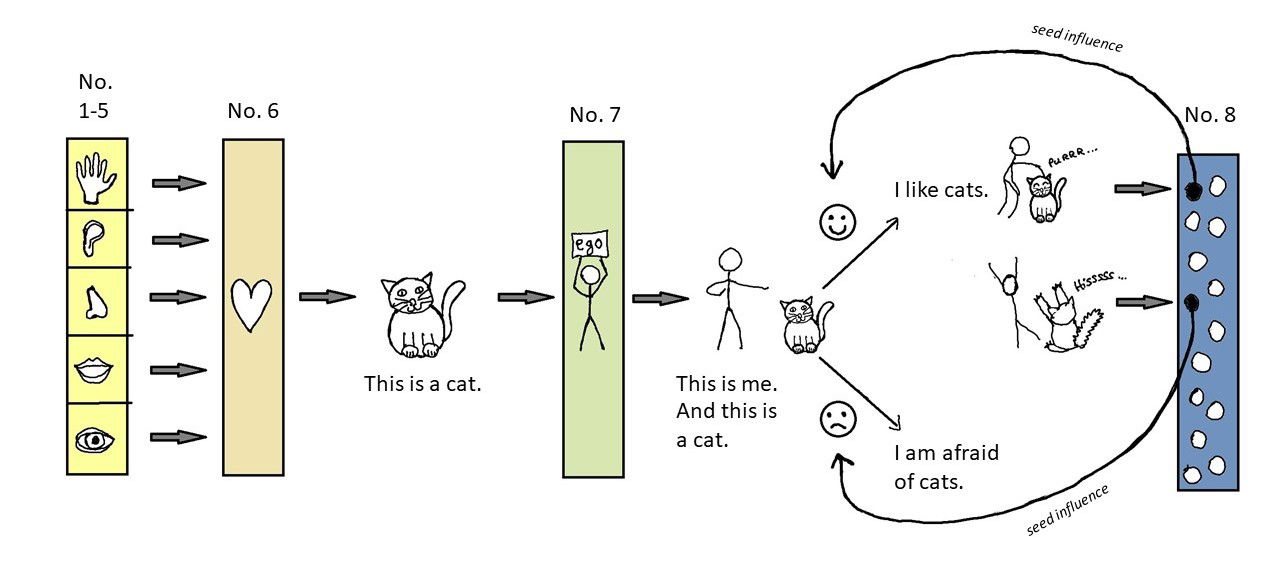The Eight Consciousnesses

Let us say at the outset: not all Buddhist schools divide consciousness into exactly eight types and there are also different interpretations regarding their mode of interaction. We focus here on the view of the Buddhist Yogacara-School and the representation of consciousness in the Cheng Wei Shi Lun.
The Yogacara school divides the eight consciousnesses into three levels. The first level comprises the first six consciousnesses, namely our five senses plus mind, i. e. the mental processing of sensory perception. Example: our ‘eye consciousness’ sees an object and the sixth consciousness, the mind, recognizes this object as a ‘cat’ (comparable to modern mobile phone cameras which automatically recognize whether the camera is pointed at an animal or at a flower). This information is then forwarded to the second level, where the seventh consciousness, called manas, is located.
Manas is the ‘I-consciousness’, which perceives the cat as an object different from itself: "This is me - and this is a cat." Through this distinction between oneself and an object, there is evaluation, because the ego will naturally want to classify the relationship between itself and the object: "I like cats" or "I am afraid of cats." Our positive-negative thinking thus arises in the seventh consciousness.
Self-Reflection: Focus on any object near you, name it, and watch what kind of evaluations arise in manas as you do this.
Based on the evaluation of the object, we will then perform an action: if I like cats, I will rub the kitty’s belly, for example. In doing so, I have an experience: for example, the cat will let me touch it - or, if I am unlucky, it will bite me. This experience generates a ‘seed’ which is stored in the eighth consciousness (called alaya), the deepest level. It contains seeds for everything we have ever experienced - not only in this life, but also in all previous lives, according to Buddhism. The seeds can ripen and now and then rise to the surface, where they influence the other seven consciousnesses. Example: if the cat bit me, the next time I meet a cat I will probably be more careful and perhaps not touch it right away; in other words, the seeds influence the evaluation in manas. The eighth consciousness is in many ways comparable to the subconscious in Western psychology.
Self-Reflection: What kind of seeds in your alaya gave rise to the evaluation in manas which you observed above? What kind of past experiences led you to evaluating the object the way you did?
According to Buddhism, it is these seeds with all our experiences which ‘remain’ after death and which eventually manifest again in a physical body, depending on how we have nurtured them. And so, in the next life, we become a parrot, for example, if our thoughts and deeds have produced enough seeds with such characteristics. To put it in a nutshell: "You become physically what you are inside".
